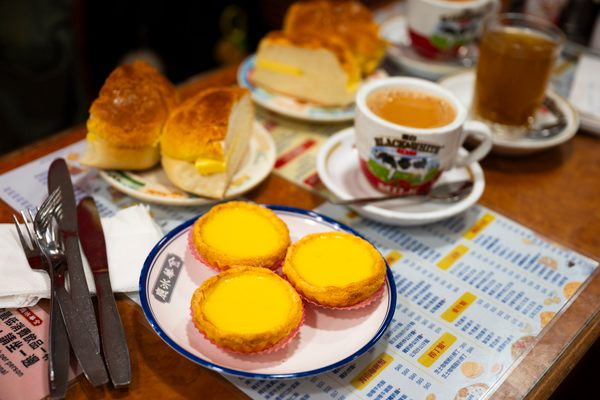When visiting Hong Kong, it’s likely you’ll have wonton noodles, roast goose or siu mai on your eating checklist. But you may also want to consider instant noodles topped with beef satay, macaroni soup garnished with a slice of ham, French toast, or a cup of tea served with evaporated milk.
These are just some of the staples of cha chaan teng, literally “tea restaurants,” a ubiquitous type of eatery in Hong Kong. Emerging in the post-WWII era, cha chaan teng were where people in the then-British port colony went for Western-style dishes, often made with imported and thus relatively expensive ingredients. In the following decades, as Hong Kong became wealthier, cha chaan teng became less exclusive and more quotidian, a convenient place to grab a cheap, fast meal.
As the Cantonese name suggests, the emphasis is on tea, specifically lai cha, black tea served with milk—almost exclusively evaporated milk almost poured from tins. Baked goods—also a novelty—are another important element of cha chaan teng, and range from sweet rolls, breads that are served in various sweets and sandwiches, and egg tarts.
Considered one of the oldest family-run cha chaan teng in Hong Kong, Kam Wah was opened in 1973 by a talented Chinese baker. The menu today spans all the cha chaan teng staples—egg sandwiches served on white bread, egg tarts, dishes revolving around instant noodles—but everyone in Hong Kong knows that this is the place to get a pineapple bun, or bo lo bao.
A bona fide cha chaan teng staple, the bun contains no pineapple, but rather has a topping that emerges from the oven scored and caramelized, resembling the eponymous fruit. Kam Wah allegedly sells 5,000 pineapple buns per day. Pair your pineapple bun with a hot yuenyeung, a mix of tea and coffee that’s served at cha chaan teng.



